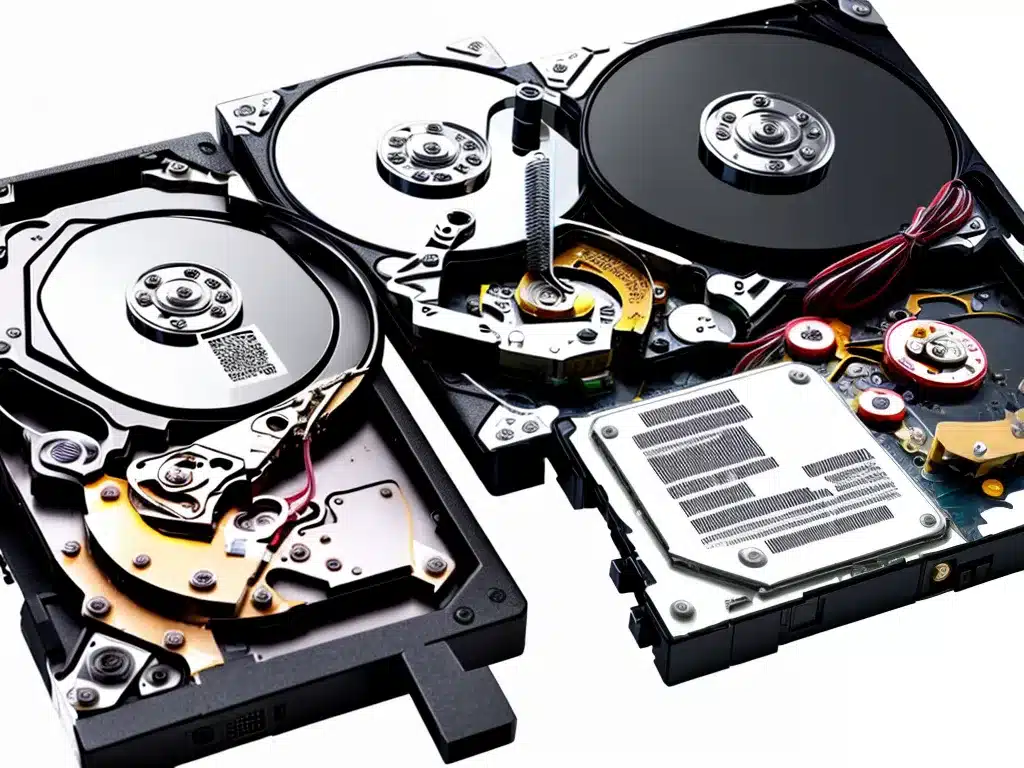
Having an SSD (solid state drive) that won’t boot can be incredibly frustrating. As SSDs become more prevalent, data recovery is becoming increasingly difficult. However, with some persistence and the right tools, recovering data from a non-booting SSD in 2024 is very possible.
Diagnosing the Issue
The first step is to diagnose why your SSD is not booting. There are a few common causes:
Logical Failure
-
Corrupted system files – Critical OS files like the registry or bootloader may have become corrupted. This prevents the SSD from loading the OS.
-
Bad sectors – Portions of the NAND flash memory may have failed, leading to data corruption. The drive cannot access the data needed to boot.
-
Accidental deletion – System files like the partition table or bootloader may have been accidentally erased.
-
Virus/malware – Malicious software could have infected and damaged critical system files.
Hardware Failure
-
Controller failure – The SSD controller chip may have failed, rendering the drive inaccessible.
-
Broken connector – Connectors like SATA or USB may have become damaged, disconnecting the SSD.
-
Power failure – Insufficient/irregular power delivery could have caused a component failure.
-
Physical damage – Drops, impacts, liquid spills etc. may have damaged internal chips.
Firmware Corruption
- Bad firmware updates or sudden power loss during an update could have corrupted the SSD’s controller firmware.
Attempting Data Recovery in 2024
Data recovery from a non-booting drive is challenging. But in 2024, you have a few good options:
Use An External Enclosure
-
Attach the SSD to another computer via an external USB enclosure. This often revives an SSD with logical failures.
-
Enables access as a secondary drive to salvage files and folders.
-
May allow reinstallation of system files to fix boot issues.
Boot Into Recovery Mode
-
Insert SSD into another similar system and boot into recovery mode.
-
Can perform system file repairs, bootloader rebuilds etc.
-
Allows backup of data before attempting repairs.
Use Data Recovery Software
-
Advanced tools like R-Studio or Disk Drill can read SSDs with corrupted firmware.
-
Powerful scanning recovers lost or deleted partitions and inaccessible data.
-
Recovers vast majority of data if hardware components still function.
Send to a Professional Service
-
For SSDs with advanced hardware failure, use professional recovery services like DriveSavers.
-
Toolkits can repair or replace damaged components like controller boards.
-
Clean room facilities prevent exposure to moisture and dust.
-
Expensive but can recover data other methods cannot.
Preventing SSD Boot Failure
To avoid SSD boot problems in the future:
-
Keep firmware updated to fix bugs and improve reliability.
-
Use surge protectors and UPS systems to prevent power fluctuations.
-
Handle SSDs gently and transport in protective cases.
-
Maintain backups of critical data both on and off-site.
-
Use enterprise-grade SSDs designed for 24/7 operation.
-
Monitor SSD health using tools like CrystalDiskInfo.
Final Thoughts
Recovering data from a non-booting SSD may seem daunting. But by methodically applying the right tools and techniques, successful recovery is very possible even as SSD technology evolves. Following best practices for handling and maintenance will also greatly reduce the chances of a drive failure down the road. With some perseverance and the help of professionals when needed, you can rescue important data from a failed solid state drive.












